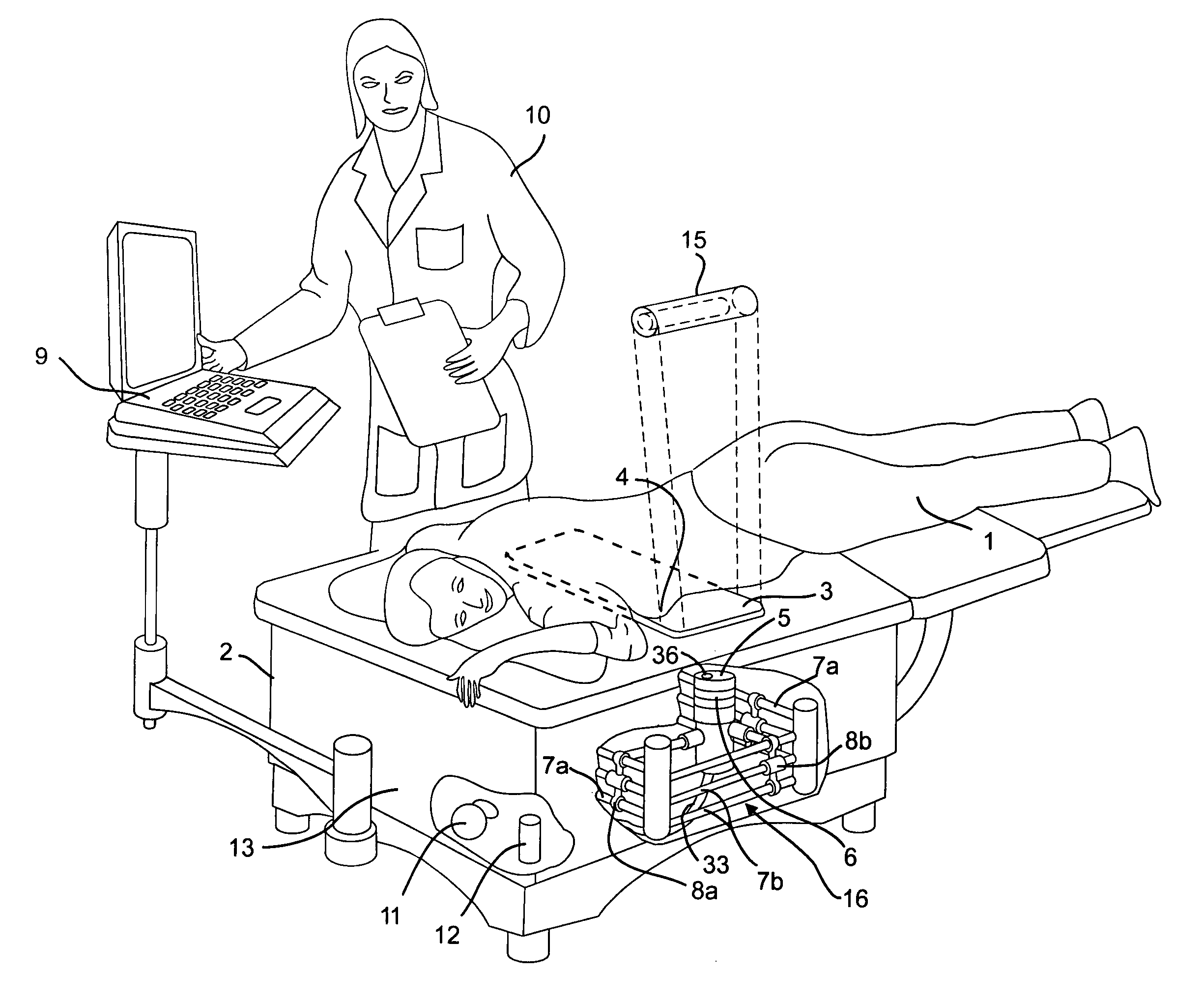Apparatus and method for diagnosing breast cancer including examination table
a technology of examination table and breast cancer, which is applied in the field of medical examination apparatus and methods for detecting breast cancer, can solve the problems of difficult to treat breast cancer, low screening cost, and large health problems of women, and achieve the effects of safe, simple, comfortable, convenient and effective treatmen
- Summary
- Abstract
- Description
- Claims
- Application Information
AI Technical Summary
Benefits of technology
Problems solved by technology
Method used
Image
Examples
Embodiment Construction
[0037]An embodiment of the present invention is illustrated with reference to FIGS. 1-8. FIGS. 9-10 disclose an alternate embodiment discussed below. FIG. 1 illustrates a breast cancer radar screening system with a patient 1 lying prone on an examination table 2 of the present invention, with her breasts 4 pressed against a microwave and optically transparent scan plate 3. An upper horizontal face 5 of an antenna assembly 6 is in close proximity to the scan plate 3 with an air gap that avoids abrasion with the upper face 6 of the antenna assembly and also use of the scan plate 3 avoids contact with the patient 1. In an embodiment, the upper face 5 of the antenna 6 may be within approximately 1-3 mm of the scan plate 3.
[0038]A scanning subsystem 7a, 7b, 8a, 8b is located in an enclosure 16 formed within the table 2. The scanning subsystem 7a, 7b, 8a, 8b includes a motorized system that moves the antenna assembly 6 over the bottom of the scan plate in a predetermined pattern (see FIG....
PUM
 Login to View More
Login to View More Abstract
Description
Claims
Application Information
 Login to View More
Login to View More - R&D
- Intellectual Property
- Life Sciences
- Materials
- Tech Scout
- Unparalleled Data Quality
- Higher Quality Content
- 60% Fewer Hallucinations
Browse by: Latest US Patents, China's latest patents, Technical Efficacy Thesaurus, Application Domain, Technology Topic, Popular Technical Reports.
© 2025 PatSnap. All rights reserved.Legal|Privacy policy|Modern Slavery Act Transparency Statement|Sitemap|About US| Contact US: help@patsnap.com



